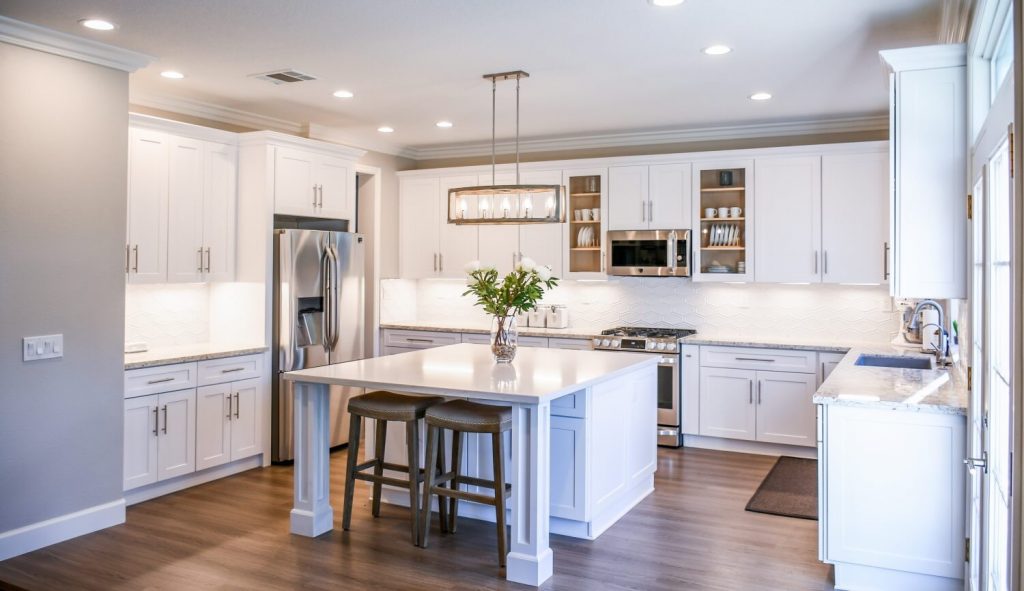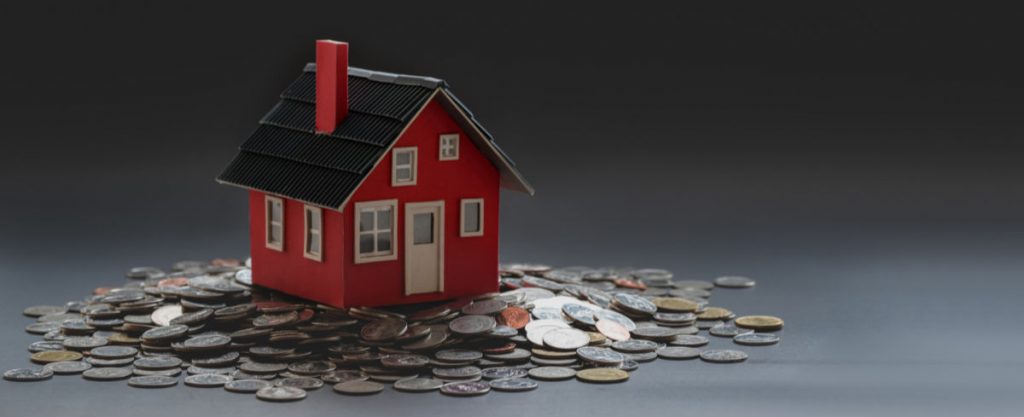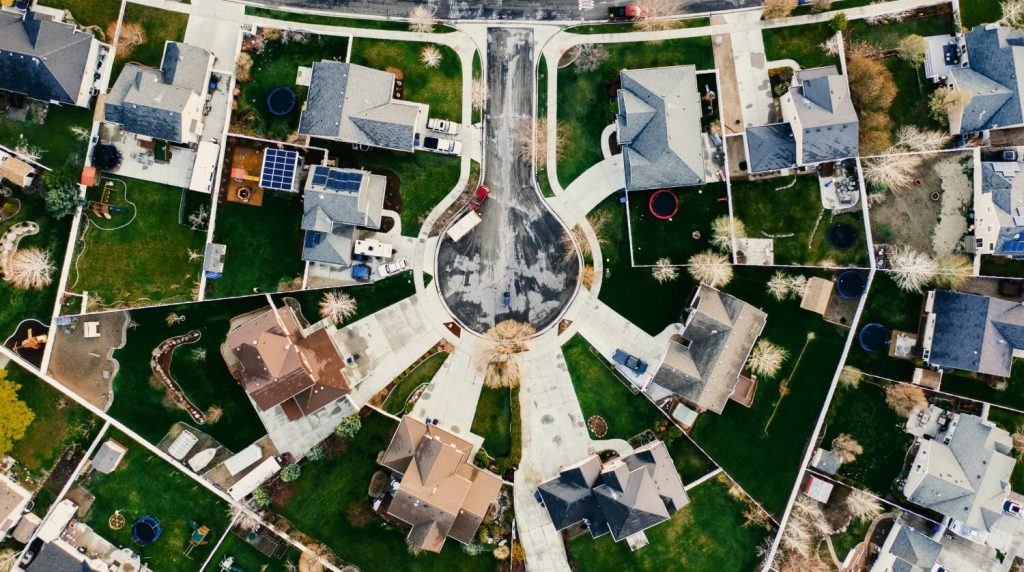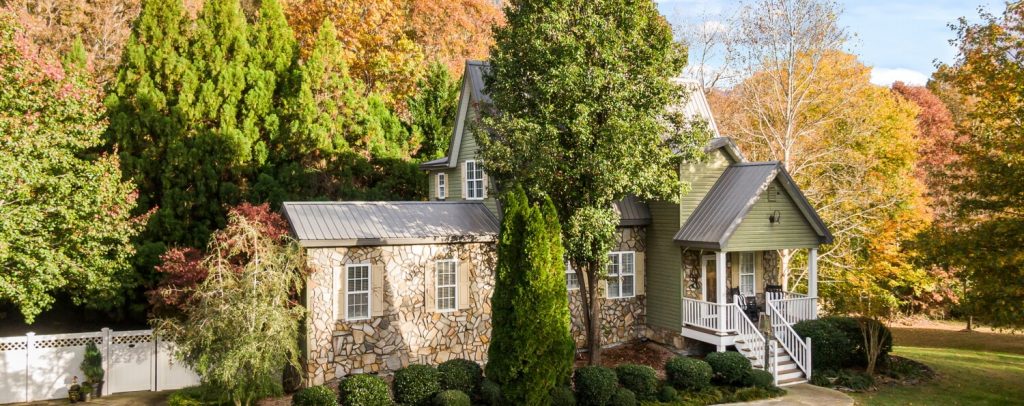Buying a house is one of the most important financial decisions a person can make. In most cases, a 30-year mortgage will be used to finance the purchase of a home, representing the longest financial commitment possible for most American people.
Given the weight of this particular decision, it makes perfect sense to investigate all the most important factors when buying a house. As a potential homeowner, you need a fully formed understanding of all the variables involved before you even think about putting down a deposit.
The goal of this guide is to unpack all the key elements that you need to consider when purchasing a house. It is split into three distinct sections, namely: physical factors, financial factors and economic factors.
Table of Contents
Physical Factors When Buying A House
1. Location, Location, Location
Location is often cited as the most important factor to consider when buying a home. There’s a good reason for this. The location of a home is one of the primary predictors of a home’s current and future value.
If you gain entry into a desirable area, the value of your home will have solid economic foundations. This is advantageous news if the market takes a downturn, because your home will be more likely to retain its value. It’s even better news in a bullish market, because the property will appreciate more than a similar property in a less desirable area.
To gain a better understanding of how much your home will be worth in the future, be sure to use our home appreciation calculator.
2. The Number Of Bedrooms & Bathrooms
Generally speaking, it’s a case of the more the merrier when it comes to the number bedrooms and bathrooms in a house. It’s easy to understand why. When analysing houses in the same suburb:
Two-bedroom homes tend to be more valuable than one-bedroom homes
Three-bedroom homes tend to be more valuable than two-bedroom homes
Four-bedroom homes tend to be more valuable than three-bedroom homes
This same logic can be applied to bathrooms. A three-bedroom three-bathroom home is likely to sell for more than a three-bedroom one-bathroom home, provided they are reasonably similar in size and location.
You can add between $30,000 and $60,000 in value with every extra bedroom that is added to a home and approximately $15,000 to $25,000 with every extra bathroom
3. Single Story or Double Story
Even though Double Story homes tend to sell for more than single story homes, there are advantages and disadvantages to each approach.
Single Story Homes
- More living space per square foot
- Safer for families with young children
- Safer for elderly people with mobility challenges
- Tend to be less noisy than multi-story homes
- Often cost more per square foot to build
- May have a lower resale value
Double Story Homes
- Cost less per square foot to build
- Offer better views
- Can increase the amount of outdoor space that you can access
- Stairways can decrease the amount of livable space available
- Can be dangerous for young children and elderly people
- Often have a higher resale value
- Can take longer to build
Ultimately, you need to balance your own preferences, the needs of your family (if applicable) and the long-term desirability of the property when choosing between a single story and a double story.
4. The Size of The Plot (Square Footage)
When it comes to plot size, bigger tends to be better, especially when evaluating homes in the same neighborhood. Using price per square foot is one of the best ways to assess the cost of homes in a given area, and it allows you to compare properties in different suburbs, neighborhoods, cities and even states.
To put it simply, bigger plots tend to be worth more than smaller plots in the same area, although there may be exceptions to this rule.
5. External Features Like Gardens And Pools
Interestingly enough, large gardens and pools don’t automatically add value to a home. In fact, a large percentage of buyers can be put off buying these features for two simple reasons.
- Gardens and pool require physical upkeep
- Gardens and pools increase the maintenance costs associated with the home
With that being said, if you intend to live in the property for a long time both of these features can be tremendously rewarding features for home owners to have access to. In the end, it comes down to a matter of personal preference. If you are likely to enjoy these features, it makes perfect sense to prioritize them. Just don’t make the mistake of assuming that they will automatically increase the value of the home.
6. The Size, Features And Quality Of The Kitchen

If your goal is to quickly increase the value of your home, the kitchen is often the best place to start. In fact, it is the second most popular renovation for homeowners to complete, with bathroom renovations being the most popular, according to the national association of realtors.
The reasoning is simple. The kitchen is the heart of the home. A spacious, attractive, highly functional kitchen is one of the most desirable features that a home can have. It can make your property easier to live in, more desirable to potential renters and increase the future selling price of the home.
7. Age & Condition of The Home
One of the determining factors that cause house flippers tend to search for old or poorly maintained homes. They know that such homes are ripe for a rehab and repair job that could dramatically increase the after-repair value.
As a potential buyer, you should find out when your home was built, and inspect the quality of the foundations and the finishes. You don’t want to inherit any problems that could be costly to fix. The onus is on you to investigate the property properly.
8. Red Flags To Be Aware Of
It’s one thing to note all the best features of the property, but you also need to be mindful of any potential weaknesses. For instance, the following can have a massive impact on how safe and pleasant it is to live in a house, and how difficult it may be to sell it in the future.
- Foundation Cracks
- Asbestos
- Popcorn Ceilings
- Molded Ceilings, Saggy Ceilings & Low Ceilings
- Noise levels
- Doors that won’t close
- Water stains
- The structural integrity of the roof
- A damp, moldy or otherwise off-putting smell
Financial Factors When Buying A House

1. How much house can you afford?
We’ve already touched on the notion that buying a property is one of the biggest financial commitments that a person can make. While 20-year mortgages were more popular in the past, it is far more common for Americans to apply for 30-year bonds when buying a property in this day and age.
A contract spanning 360 months requires the borrower to act in a financially responsible manner for three decades. For this reason, you need to be level headed when establishing how much house you can actually afford.
On this point, it is helpful to be mindful of the 28/36 debt-to-income rule. According to the 28/36 rule:
28% – Your mortgage repayment should not exceed 28% of your monthly pre-tax salary
36% – Your total debt obligations should not exceed 36% of your monthly pre-tax salary
In addition, you can also work out a quick approximation of what you can afford by simply multiplying your annual salary by 2.5 or 3, depending on how much risk you are willing to take on.
For more information on how to work out how much house you can afford, have a look at our detailed guide here.
2. Will you live in the house or rent it out?
It is most common for first time homebuyers to live in the house they purchase. However, it is also true that most Americans will move between 8 and 12 times over the course of their lifetime. This is important, because it means you should consider your own needs, and those of the future tenants.
You should approach a property purchase as a homeowner and an investor. As a homeowner, you want the property to fulfil as many of your needs and desires as it possibly can, without overextending your budget. As an investor, you need to be cognizant of the fact that someone else will probably live there in future.
To ensure that the home will attract future tenants/buyers, it is best to avoid adding quirky features that will only appeal to a subset of the population. As a rule of thumb, stick to tried and trusted high ROI renovations, never use funky colors, and do your best to keep the house clean and orderly while you live in it.
3. Is your goal to sell the house for profit eventually
When investing in real estate, you need to have a clearly defined exit strategy. Fortunately, your choices are somewhat limited in that you can only really do three things.
- Sell it
- Rent it out
- Live in the house for as long as humanly possible
If selling the house is your ultimate end goal, you will need to keep the property in a respectable condition, and create a budget for maintenance and potential renovations.
Physical Elements To Maintain
● Roofing
● Interior and Exterior Paint Quality
● Flooring, Windows & Doors
● Air Conditioning & Heating Systems
● Lighting Fixtures
● Security System
● Fireplaces
● Countertops, Cupboards & Cabinetry
● Electrical Fixtures
● Internet Access & WiFi Setup
Renovations & Repairs to Consider
- Kitchen Upgrades
- Bathroom Upgrades
- Basement Upgrades
- Garage Upgrades
- Adding A Deck
- Adding An Office
- Adding Storage Space
- Creating an open plan layout
- Improving landscaping to increase curb appeal
- Improve the lighting throughout the house
4. Have you saved for a down payment?
There are a number of real estate gurus that are willing to promote the notion that you can buy a house with no money down, using other people’s money. This is problematic for two reasons:
1) The bigger your down payment, the better your loan terms will be
When buying a property that you intend to live in, it is ideal to aim for a deposit of 10% or more of the property’s current market value. Every dollar that you put down for the deposit represents 30 years of compounding that you save instantly.
2) You are required to payback full amount of the loan, with interest, over 30 years
As a borrower, you are legally obliged to pay back every single cent that is loaned to you. In other words, the money that is being borrowed is effectively the money that you will earn in the future. You are responsible for generating that income, even if the bank or loan provider shoulders the initial capital outlay. In other words, it’s not other people’s money. Instead, it is your future earnings, with interest. That’s a far more truthful way to view your mortgage agreement.
6. Interest Rates
Together with your debt-to-income ratio, the interest rates offered by your bank or loan provider will have a massive impact on how much house you can afford. On this point, it’s worth noting that covid-19 has actually been favorable for many real estate investors because mortgage interest rates have been cut so drastically.
For instance, “the average rate for a 30-year fixed mortgage fell to 2.78% in November 2020, the lowest in Freddie Mac data going back nearly 50 years“. This is one of the biggest reasons why the real estate market in America is booming. Simply put, the spread of coronavirus has ultimately led to a massive drop in mortgage rates, making real estate financing more attractive than it has been this century.
Social & Economic Factors When Buying A House

1. Supply & Demand
At a high level, homes are just as susceptible to the laws of economics as commodities are. In essence this means:
- A shortage in houses tends to push prices up
- An oversupply of houses tends to push prices down
You can actually see this by analyzing the impact of covid-19 on the real estate market in the US. The drop in interest rates has made houses far more affordable from a financing perspective. However, the number of houses for sale hasn’t kept up with this newfound demand. As a result, home appreciation rates in 2020 have skyrocketed, despite all the other economic challenges that coronavirus has introduced.
2. Is it in a good neighborhood
If there’s one thing you can learn from house flippers, it’s how to assess the potential value of a home using comps (comparable homes). When analyzing houses with similar features (bedrooms, baths and square footage), the last known selling price is one of the best reference points available to you.
For instance, if a 3 bed, 2 bath 500 square foot home recently sold for $300,000, it stands to reason that a comparable property in the same street will sell for a similar price. To see this in action, New Silver’s free ARV calculator can be tremendously helpful. You just need to enter the address to view the last known selling price.
3. Is it close to good schools?
“A 2017 study by the National Association of Realtors (NAR) found 26 percent of home buyers considered the quality of schools when looking for a new home. Schools aren’t the only determinant of home prices—safety, commute times, jobs, and housing inventory all play a part in any market. But a good home in a good school district can fetch a higher price, and also hold a better resale value than a similar home in a less-stellar district”.
If you’re a parent or thinking about starting a family in the near future, it makes sense to focus on good school districts. It can be very inconvenient if you have to travel long distances to drop your kids off, and being far away from a school can decrease the likelihood of your child being accepted. Fortunately, both of these possibilities can be averted with careful analysis of the schools available in the area.
4. What are the costs of living in the area?
Simply put, some areas in the US are considerably more expensive than others. For instance, in San Francisco, Manhattan and Washington D.C the cost of living is more than 60% above the national average. Conversely, areas like Memphis, Indianapolis and Columbus are famously affordable, with living costs that are more than 20% below the national average.
Naturally this particular factor is most important if you choose to live in the house that you purchase. If your heart is set on a particularly expensive area, you may need to compromise on the size and price of the home, to ensure that you can safely cover all your expenses with your existing income.
5. Job Security
According to ScienceDirect.com “We find the expected relationship between employment and prices: job creation increases housing prices and job destruction decreases housing prices. Our findings show that 1–2 years after 1000 extra jobs have been created, monthly rents in nearby properties will be between 0.5 and 1% higher, and at least 2% for prices.”
In other words, job prospects and job availability ultimately have a favorable effect on home appreciation. A strong labor market can also be reassuring in that it should make it easier for you to maintain your existing job, find a higher paying job or bounce back from a job loss.
6. Are the crime and safety ratings acceptable?
As a potential homeowner, you need to consider the crime ratings of the area that you are thinking about investing in. Apart from the peace of mind benefits that you can unlock by choosing a safe area, the property is also more likely to appreciate in value. In addition, lower crime ratings have been shown to decrease the vacancy rate (percentage of time without tenants), which can have a big impact on the profitability of an investment property.
7. Have large scale supermarket chains entered the area
Often labelled ‘the retail effect’ the presence of successful grocery stores is generally a green flag for prospective home buyers. This is a two-fold process.
Firstly, these companies conduct in-depth financial research into the viability of investing in a particular area. If an area or suburb meets their stringent standards, it usually indicates an adequate supply of customers that all live close by to the target location. Moreover, these potential customers are deemed to have the purchasing power necessary to sustain the business location indefinitely, if their analysis is correct.
Secondly, the presence of stores like Whole Foods, Trader Joes and Aldi can add value to the surrounding area, quite literally. In the Attom study mentioned above, it was found that “in termsof home price appreciation, the study found that homes closer to ALDI saw average appreciation increases of 42%, with Trader Joe’s coming in at 33%. Properties found closer to a Whole Foods store had an average five-year appreciation of 31%“.
Final Thoughts
It’s clear to see that there are a number of factors that you need to consider when buying a house. However, these elements are not as overwhelming as you might think, and you should be able to complete most of your research online, in a matter of days.
In the end, the most important thing is to ensure that you are financially capable of paying back the bond, and you select an area that is likely to increase in value over time. If you reduce this problem to these two factors, you should be able to buy a house with peace of mind and confidence in your decision.



